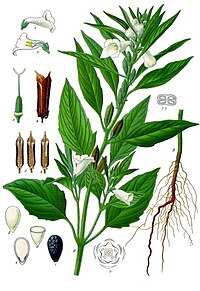
The use of Basidiomycota mushrooms in poultry nutrition–a review
Sign Up to like & getrecommendations! Published in 2017 at "Animal Feed Science and Technology"
DOI: 10.1016/j.anifeedsci.2017.06.001
Abstract: Abstract Recently, there has been a noticeable growth in interest in the potential of edible mushrooms and their application in prevention and therapy. The numerous health-promoting properties of edible mushrooms include: antioxidant, immunostimulatory, anti-inflammatory, antibacterial,… read more here.
Keywords: use; use basidiomycota; poultry nutrition; edible mushrooms ... See more keywords

Taurine in poultry nutrition
Sign Up to like & getrecommendations! Published in 2020 at "Animal Feed Science and Technology"
DOI: 10.1016/j.anifeedsci.2019.114339
Abstract: Abstract Taurine (Tau), a sulphur-containing, non-proteinaceous amino acid traditionally is not considered to be essential for poultry, since it is synthesised in the body. Recent changes in breeder diet formulation associated with removal of animal-derived… read more here.
Keywords: tau; taurine poultry; taurine; poultry nutrition ... See more keywords

The usefulness of oregano and its derivatives in poultry nutrition
Sign Up to like & getrecommendations! Published in 2018 at "World's Poultry Science Journal"
DOI: 10.1017/s0043933918000454
Abstract: Origanum vulgare is a natural, less toxic, residue free feed supplement for poultry when compared to other synthetic ingredients. It contains key bioactive components, including as thymol and carvacrol. O. vulgare as a poultry feed… read more here.
Keywords: derivatives poultry; poultry nutrition; oregano; vulgare ... See more keywords

Transforming Rhodotorula sp. Biomass to Active Biologic Compounds for Poultry Nutrition
Sign Up to like & getrecommendations! Published in 2023 at "Agriculture"
DOI: 10.3390/agriculture13061159
Abstract: In broiler chick-rearing, the color is usually acquired by synthetic carotenoids in addition to broiler diets (25–80 mg/kg feed), often represented by β-apo-8′-carotenal. In the past fifteen years, the demand for organic food products originating… read more here.
Keywords: transforming rhodotorula; active biologic; rhodotorula biomass; nutrition ... See more keywords